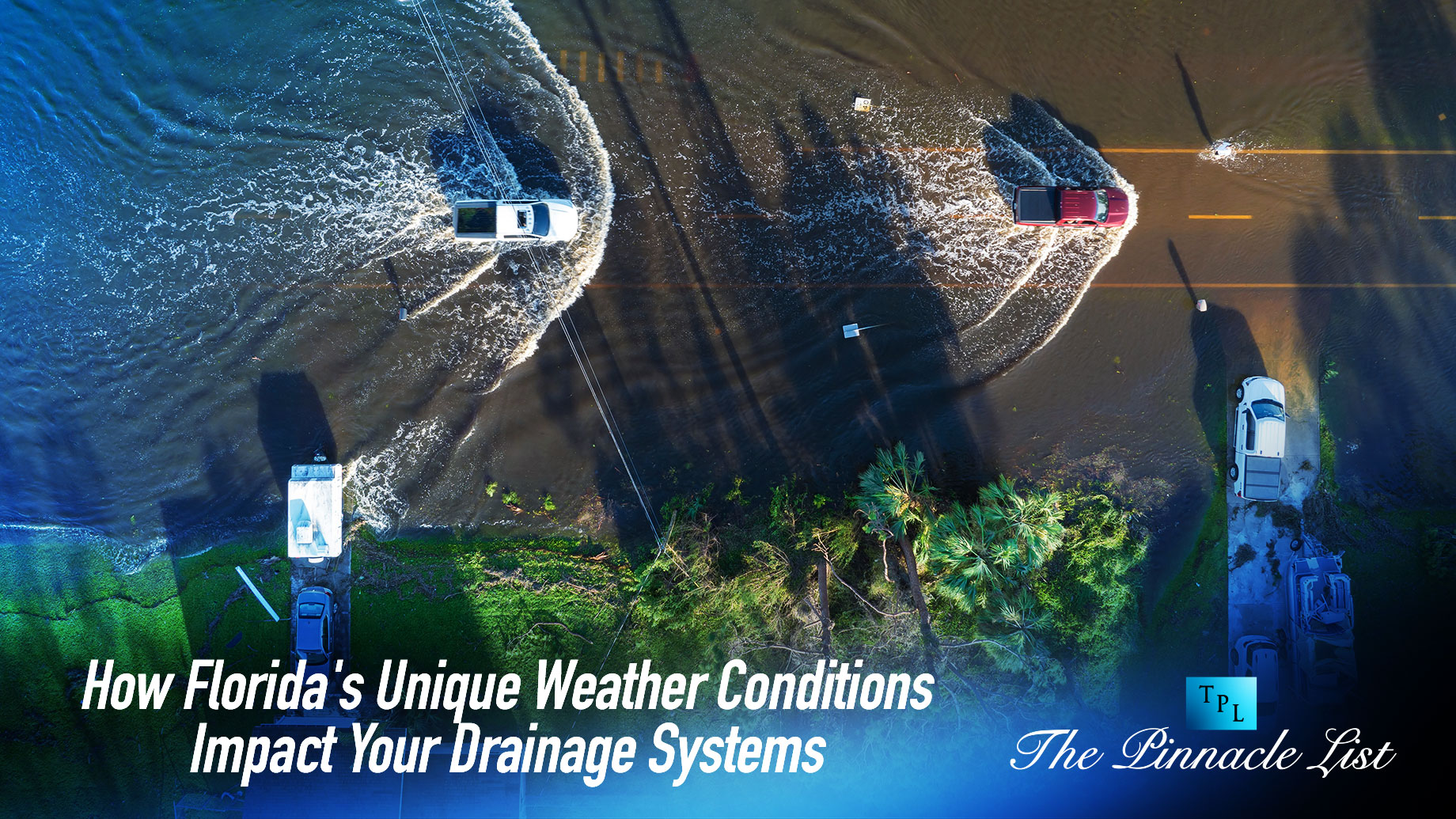
Florida, often referred to as the Sunshine State, conjures up images of sparkling beaches, beautiful palm trees, and year-round warm weather. However, while the state is undoubtedly a dream destination for many, it also presents unique challenges to its residents, particularly regarding managing their drainage systems.
The state’s distinctive weather patterns, featuring a healthy dose of heavy rainfall, storms, and high humidity, can put unusual strains on the drainage systems. Let’s explore these challenges in detail and understand how Florida’s unique weather impacts your drainage systems.
Understanding Florida’s Climate
To appreciate the effect of Florida’s weather on drainage systems, it’s essential first to understand its climate. Florida exhibits a tropical climate in the south and a subtropical climate in the north. It is characterized by:
- A High Average Rainfall: With an average rainfall of 50-60 inches annually, Florida sees a higher volume of rain compared to most U.S. states. This is more pronounced during the rainy season, spanning from June to September.
- Frequent Thunderstorms: Florida is known as the “thunderstorm capital” of the United States. The hot and humid summers often culminate in thunderstorms, especially in the Peninsula’s interior.
- Hurricane Seasons: Positioned in Hurricane Alley, Florida often bears the brunt of Atlantic hurricanes and tropical storms. These periods are marked by torrential rains and intense winds.
- High Humidity Levels: Throughout the year, Florida experiences high humidity levels, which, coupled with high temperatures, foster lush vegetation growth.
Impact of Florida Weather on Drainage Systems
Florida’s unique weather conditions can put a significant strain on your drainage systems. That is why working with professional pipe lining solutions is important to ensure the long-term performance and reliability of your drainage system. Here’s how:
- High Rainfall and Hurricanes: The heavy rains and hurricanes significantly impact drainage systems. When rainfall is high or a hurricane hits, drainage systems can get overwhelmed by the water volume and are often incapable of handling it, resulting in flooding, especially if the system lacks the design and capacity to manage such quantities.
- Soil Saturation: Frequent heavy rainfall can lead to the saturation of soil. Once the ground absorbs its limit, it can’t take in any more water, restricting the effectiveness of septic systems and drain fields that rely on the soil’s capacity to absorb water.
- Tree Root Intrusion: The high humidity and heat, so common in Florida, encourage rampant plant growth. This sprawl includes tree roots that can work their way into your drainage pipes and cause considerable blockage and damage over time.
- Saltwater Intrusion: In coastal regions, saltwater intrusion – when seawater enters freshwater aquifers – is a significant concern. It can cause the corrosion of metal pipes in the drainage system, leading to leaks and eventually necessitating repairs or replacement.
Strategies for Efficient Drainage in Florida
Keeping in mind Florida’s unique weather profile, it’s crucial to maintain functional and efficient drainage systems. Here are a few strategies to combat these challenges:
- Regular Maintenance: This involves routine examinations and cleaning of your gutters and drains, frequent removal of blockages, and immediate repair of any breakages or damage.
- Proactive Measures: Consider incorporating rain barrels or installing a rain garden or a stormwater pond. These efficient water management structures can help to regulate excess water and prevent your drainage system from getting overwhelmed during periods of heavy rainfall.
- Professional Inspection: Given Florida’s unique weather conditions, having your drainage systems professionally inspected every few years is beneficial. Regular inspections can help you identify potential problems early before they escalate into more substantial, costly issues.
- Planned Landscaping: Where you plant trees and larger plants is essential. Ideally, they should be situated far from your drainage system to prevent root intrusion into pipes, thereby avoiding future blockages.
- Quality Materials: Opt for quality, durable materials when building or repairing your drainage systems, such as pipes made of plastic or PVC. Metal pipes tend to corrode faster in Florida’s damp conditions and should be avoided wherever possible.
Final Word
While Florida’s unique weather patterns can pose challenges for your drainage systems, these obstacles can be managed with the right strategies in place. By taking into account the specific climate of Florida when designing, installing, and maintaining your drainage system, you can ensure it will function optimally throughout the year.
In an era where weather patterns are becoming more unpredictable, understanding your local environment and preparing accordingly is more important than ever. Indeed, careful planning, regular inspection and maintenance, and proper landscaping can help Floridians mitigate any potential drainage issues.
This way, whether you’re a long-time homeowner or considering a move to the Sunshine State, there will be one less thing to worry about in your own personal paradise.